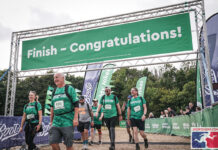
A 19th century castle in Stornoway has opened for the first time in over 25 years, after multi-million pound renovations overseen by WSP | Parson Brinckerhoff.
The £19.5 million project to restore Lews Castle was led by the local authority for the Outer Hebrides, Comhairle nan Eileen Siar, and has created a new museum, archive and hospitality venue.
The castle was officially opened by the First Minister of Scotland, Nicola Sturgeon, in a ceremony unveiling a plaque to commemorate the occasion.
WSP | Parson Brinckerhoff was assigned to manage the renovations in 2010 and along with devising the project programme, the professional services consultancy managed the procurement of designers and contractors, coordinated the work of the design team and devised the project’s communication and governance structure.
Brenda Jones, director at WSP | Parsons Brinckerhoff, said, “It’s been a real privilege for us to work on the restoration of Lews Castle, such an iconic Scottish landmark.
“The project has rescued a Category A listed building and given it a sustainable future as a museum, archive and hospitality venue which the public will have full access to for the first time in its 170 year history, which is a very exciting prospect.
“We feel our project management expertise really helped to minimise risk issues on such a complex project and we made sure that all project team members knew their responsibilities and deadlines in order to achieve the amazing vision the council had for the castle.”
Joe MacPhee, head of economic development at Comhairle nan Eilean Siar, added, “WSP | Parsons Brinckerhoff has played a key role in helping the Comhairle to deliver this project. Their proactive approach to project management and team ethos was crucial in enabling the project team to overcome the many and varied challenges of a complex project.
“As well as creating employment in the area, we hope that the castle will help increase tourism to Stornoway as well as to the Outer Hebrides.”
The project received funding from Comhairle nan Eilean Siar, the Heritage Lottery Fund, the Scottish Government, Historic Scotland, the European Regional Development Fund, Highlands and Islands Enterprise and Gaelic language organisation, Bòrd na Gàidhlig.








